The federal policy of flooding the market with cheap, foreign white-collar graduates and blue-collar labor shifts wealth from young employees toward older investors. It also widens wealth gaps, reduces high-tech investment, increases state and local tax burdens, reduces marriage rates, and hurts children’s schools and college educations.
The cheap-labor economic strategy also pushes Americans away from high-tech careers, and it sidelines millions of marginalized Americans, including many who are now struggling with drug addictions. JOHN BINDER
Josh Hawley: GOP Must Defend
Middle Class Americans Against ‘Concentrated Corporate Power,’ Tech
Billionaires
JOHN BINDER
The
Republican Party must defend America’s working and middle class against
“concentrated corporate power” and the monopolization of entire sectors of the United
States’ economy, Sen. Josh Hawley (R-MO) says.
Josh Hawley: GOP Must Defend
Middle Class Americans Against ‘Concentrated Corporate Power,’ Tech
Billionaires
JOHN BINDER
The
Republican Party must defend America’s working and middle class against
“concentrated corporate power” and the monopolization of entire sectors of the United
States’ economy, Sen. Josh Hawley (R-MO) says.
In an interview on The Realignment podcast,
Hawley said that “long gone are the days where” American workers can depend on
big business to look out for their needs and the needs of their communities.
Instead, Hawley explained that increasing “concentrated
corporate power” of whole sectors of the American economy — specifically among
Silicon Valley’s giant tech conglomerates — is at the expense of working and
middle class Americans.
“One of the things Republicans need to recover today is a
defense of an open, free-market, of a fair healthy competing market and the
length between that and Democratic citizenship,” Hawley said, and continued:
At the end of the day, we are trying to support and sustain here
a great democracy. We’re not trying to make a select group of people rich.
They’ve already done that. The tech billionaires are already billionaires, they
don’t need any more help from government. I’m not interested in trying to help
them further. I’m interested in trying to help sustain the great middle of this
country that makes our democracy run and that’s the most important challenge of
this day.
“You have these businesses who for years now have said ‘Well,
we’re based in the United States, but we’re not actually an American company,
we’re a global company,'” Hawley said. “And you know, what has driven profits
for some of our biggest multinational corporations? It’s been … moving jobs
overseas where it’s cheaper … moving your profits out of this country so you
don’t have to pay any taxes.”
“I think that we have here at the same time that our economy has
become more concentrated, we have bigger and bigger corporations that control
more and more of our key sectors, those same corporations see themselves as less
and less American and frankly they are less committed to American workers and
American communities,” Hawley continued. “That’s turned out to be a problem
which is one of the reasons we need to restore good, healthy, robust
competition in this country that’s going to push up wages, that’s going to
bring jobs back to the middle parts of this country, and most importantly, to
the middle and working class of this country.”
While multinational corporations monopolize industries, Hawley
said the GOP must defend working and middle class Americans and that big
business interests should not come before the needs of American communities:
A free market is one where you can enter it, where there are new
ideas, and also by the way, where people can start a small family business, you
shouldn’t have to be gigantic in order to succeed in this country. Most people
don’t want to start a tech company. [Americans] maybe want to work in
their family’s business, which may be some corner shop in a small town …
they want to be able to make a living and then give that to their kids or give
their kids an option to do that. [Emphasis added]
The problem with corporate concentration is that it tends to
kill all of that. The worst thing about corporate concentration is that it
inevitably believes to a partnership with big government. Big business and
big government always get together, always. And that is exactly what has
happened now with the tech sector, for instance, and arguably many other
sectors where you have this alliance between big government and big business …
whatever you call it, it’s a problem and it’s something we need to address.
[Emphasis added]
Hawley blasted the free trade-at-all-costs doctrine that has
dominated the Republican and Democrat Party establishments for decades,
crediting the globalist economic model with hollowing “out entire industries,
entire supply chains” and sending them to China, among other countries.
“The thing is in this country is that not only do we not make
very much stuff anymore, we don’t even make the machines that make the stuff,”
Hawley said. “The entire supply chain up and down has gone overseas, and a lot
of it to China, and this is a result of policies over some decades now.”
As Breitbart News reported, Hawley detailed in the interview
how Republicans like former President George H.W. Bush’s ‘New World Order’
agenda and Democrats have helped to create a corporatist economy that
disproportionately benefits the nation’s richest executives and donor class.
The billionaire class, the top 0.01 percent of earners, has
enjoyed more than 15 times as
much wage growth as the bottom 90 percent since 1979. That economy has been
reinforced with federal rules that largely benefits the wealthiest of
wealthiest earners. A study released last month
revealed that the richest Americans are, in fact, paying a lower tax rate than
all other Americans.
India’s Ambassador Lobbies Congress to Get Green Cards for U.S.-Based Workers
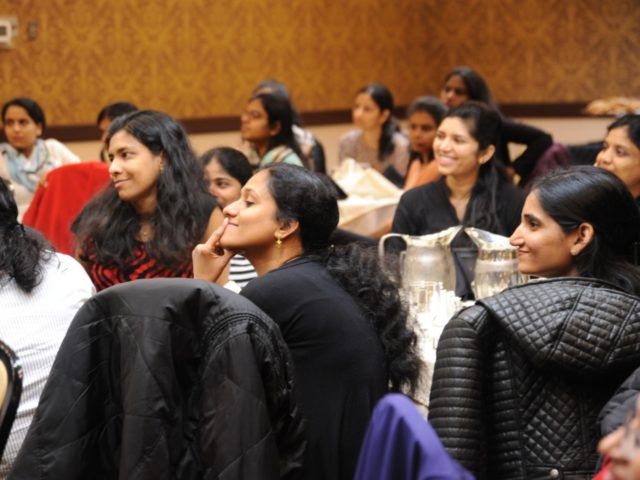
8:08
India’s ambassador on Wednesday acknowledged a meeting with Sen. Dick Durbin, the top Democrat who is blocking GOP Sen. Mike Lee’s S.386 bill that would accelerate the inflow of Indian graduates into the professional jobs sought by American graduates.
“Thank you @SenatorDurbin for an engaging discussion on the value that high-skilled #Indian professionals bring to the #US economy by filling the #STEM shortage,” said a December 4 tweet from Ambassador Harsh Shringla. The roughly 900,000 imported Indian visa-workers are “critical for the competitiveness of #American #tech industry,” Shringla claimed.
Shringla’s posted a tweet of his meeting with Durbin, which was quickly endorsed by some of India’s H-1B contract-workers in the United States who are lobbying for fast-track green cards, often dubbed “GCs.”
Thank you @SenatorDurbin for an engaging discussion on the value that high-skilled #Indian professionals bring to the #US economy by filling the #STEM shortage - so critical for the competitiveness of #American #tech industry @IndiainChicago
Thank you so much Mr. Shringla for taking the lead. We reached out to multiple politicians and diplomats from India to seek support for us and and it feels good to see you take the lead.@realDonaldTrump @sambitswaraj @DrSJaishankar @narendramodi
Jyotsna Sharma describes herself at her Twitter account as “Host-Voice of legal immigrants & It’s My Story at Mana TV & TV5, Pro Clear GC Backlog activist.”
“It’s quite concerning to see the Indian Ambassador to the United States showing up to events where he is pushing for immigration policies that provide preferential treatment to citizens of India,” said Kevin Lynn, the founder of Progressives for Immigration Reform.
Well, the STEM shortage is a myth, and the light is beginning to shine on visa programs like the H-1B & OPT that have been abused to strictly import cheaper labor from India while simultaneously, American workers are being laid off and having to train their foreign replacements on these visas.
Durbin’s office did not respond to questions from Breitbart News.
Durbin is opposing Lee’s S.386 bill because it would send nearly all of the 120,000 “Employer-Based” green cards each year to the software industry’s imported Indian workforce. That radical shift would deny green cards to many other immigrants, including foreign scientists at U.S. universities.
Durbin’s rival bill, the RELIEF Act, would provide more green-cards for Indians — and more cards for many other foreign workers who would drive down the salaries of American professionals. Durbin is a consistent advocate for higher immigration into the United States. “We cannot open our doors to everyone who wants to come through tomorrow. “There has to be an orderly process here — [but] a process that really accommodates the world’s ambition to be part of the future of America,” he said in November.
The award of more green cards to India’s workers would be great for Indian’s economy, partly because the country’s most significant export is the millions of Indians who work abroad in the Middle East, Asia, Europe, and the United States.
In the United States, there are roughly 900,000 Indian college-graduates in jobs sought by American graduates. They get the jobs via the H-1B, Optional Practical Training, L-1, and J-1 visa-worker programs. In fact, U.S. investor-run technology companies have hired so many Indian visa-workers that Indian managers and recruiters now lead or dominate many U.S-owned companies, including Google, Microsoft, and Adobe.
Some of the Indian managers and recruiters at U.S. companies prefer to hire Indians for open jobs, and routinely discriminate against U.S. job seekers, according to Indians and Americans who have witnessed hiring actions.
India’s growing diaspora in the United States is lobbying for more green cards for Indians. For example, Sharma advocates for India’s H-1B outsourcing worker, including roughly 300,000 H-1B workers who complain they cannot get the green-cards that their U.S. employers promised them. India’s U.S. workforce cannot get the cards because the volume of India’s workers in the United States has created a massive backlog for the roughly 20,000 green cards offered to India each year. The roughly 20,000 cards are the Indian allocation under the pro-diversity “country caps” set in the 1965 immigraiton law.
India’s U.S. workforce is providing much of the lobbying power for Sen. Mike Lee’s S.386 bill.
Folks stuck in GC backlog, if you haven't participated yet, now is the time @SenatorDurbin heard our compelling stories.We appreciate & respect his time.Thx everyone for enduring the cold to meet Senator. Pls call Senator's office 202 224 2152@immivoice @SIIA_US @GcReforms
Many of India’s visa-workers in the United States are calling Durbin’s office to get him to agree with Lee’s bill, which is backed by the GOP and its business donors. The calling campaign has been conducted by Indians living far from Durbin’s home state of Illinois:
In July, Shringla touted India’s support of the S.386 bill, which would help India’s economy by steering more income and jobs into the U.S.-India Outsourcing Economy.
“I must compliment the U.S. House of Representatives for adopting the Fairness for High Skilled Immigrants bill which removes country caps on the H1B visas,” Indian ambassador Harsh Shringla told a D.C. meeting of lobbyists and advocates on in July. He continued: “I think this is an important initiative. We have worked with congressmen across the board, and we’re happy this is a bipartisan initiative in Congress, and we’re hopeful the Senate would follow course and also adopt the bill.”
India’s lobbying is backed by the U.S. technology industry, which wants to promote the use of India’s workers, partly because India’s government has the power to curb U.S. investors’ access to India’s growing consumer market.
The hiring of India’s workers by U.S. employers has helped stock-market investors in several ways.
It has helped to flood the labor market for American professionals, so pushing down U.S. salaries. It has also shifted many U.S. jobs to low-wage Indian worksites. In general, stocks rise by roughly $10 for every $1 that can be cut from a company’s payroll.
The hiring has also helped major U.S investors get a foot into the Indian consumer marketplace. For example, Walmart and Amazon are pushing the S.386 bill as they try to get India’s permission to expand their retail networks throughout India.
But the wave of Indian outsourcing has slammed the U.S. professional sector and has pushed many Americans professionals out of good jobs. The establishment media largely ignore the huge scale and nationwide impact of the job losses by Americans. But losses have gradually created a series of professionals’ groups who are lobbying against the H-1B program and the S.386 bill.
Protect U.S. Workers has LAUNCHED a NATIONAL BILLBOARD CAMPAIGN!!! gofundme.com/mvc.php?route=…
PLEASE DM ME TO JOIN YOUR STATE'S TEAM!! protectusworkers.com
LETS GO!!!!
Lynn praised Durbin for blocking Lee’s bill, saying:
Many immigration pundits have come out against this [Lee] bill because it would redistribute employment based green cards strictly to Indian citizens working in the IT sector, for the next decade. It’s a zero sum bill. Sen. Durbin realized how bad this bill was so he blocked all attempts made at passing this bill through the dubious process of Unanimous Consent voting and has asked for a public hearing. Because Sen. Durbin has become a roadblock for the Indian IT sector, we now see a tweet by Ambassador Shringla meeting directly with Sen. Durbin talking about how there’s a STEM shortage, and why it’s critical for the US economy to rely on the talents of Indian professionals.
Shringla met with Durbin on December 4 but has also met many other U.S. politicians, likely to lobby for greater use of Indians workers instead of U.S. graduates. For example, Shringla met with Gp Sen. Kevin Cramer, who is a leading supporter of the S.386 bill, which would reward more Indian graduates who take jobs in his home state.
Thanked @SenKevinCramer from #NorthDakota for his participation at the ‘Howdy Modi’ event and his support for a strong #India-#US partnership
Shringla also met Lousiana GOP Sen. Bill Cassidy:
A great pleasure to meet Senator @SenBillCassidy of #Louisiana at the #CapitolHill office to brief him on the #India-#US relationship, in general, and our burgeoning energy cooperation, in particular
He met with Florida GOP Rep. Ted Yoho:
Thank you @RepTedYoho for meeting me in your home sunshine state of #Florida - our shared vision of democracy, rule of law and equal opportunities for all citizens is the foundation of the
strategic partnership @IndianEmbassyUS
He met with Democratic Sen. Jeff Merkley:
Great to meet @SenJeffMerkley and talk about our shared objectives of green sustainable development and addressing climate change through innovation; great potential for
cooperation @IndianEmbassyUS @CGISFO
He also met Alabama Democrat Sen. Doug Jones:
Thank you @SenDougJones from #Alabama for meeting me on a busy day at the #CapitolHill to discuss the #India-#US strategic partnership and cooperation
Many U.S. investors hope to expand the U.S.-India Outsourcing Economy, which allows them to hire Indians in place of Americans, and then use the extra profits to spike their stock-market wealth:
Top U.S. CEOs lobby India's gov't to send millions of Indian graduates into the US jobs needed by US college-grads. So #SenMikeLee #S386 bill is just a starter before a "free flow of skilled labor in both countries”? bit.ly/2Wa6Ci1
In his travels through the United States, Shringla also meets with the growing Indian diaspora in the United States, many of whom are part of India’s huge visa-workforce in U.S.-based jobs.
The light that guides our country #ConstitutionofIndia.#TeamIndiainNewYork reading the #Preamble on the occasion of the 70th #ConstitutionDay of India.#WeThePeople #ConstitutionDay #26November #IndiainNewYork #ConstitutionDay2019 #Constitution
Our Chairman, Ashok Mago, at a meeting with U.S. Indian Ambassador @HarshShringla. We are always excited to promote and elevate communication about business and trade between India and U.S. twitter.com/IndianEmbassyU…
The Indian diaspora includes roughly 900,000 workers and at least one million family members, and perhaps 200,000 Indians enrolled in college or universities, many of whom also hold jobs. The population also includes a growing number of unskilled illegals who pay smugglers, dubbed “agents,” to help them migrate to the United States. Many Indians also migrate into the United States to work as independent truckers.
The Indian illegals repay their smuggling debts by getting jobs at the shops, restaurants, and other businesses that serve the growing population of India’s legal visa-workers in California, New Jersey, Texas, Illinois, and Virginia.
Census data shows how huge numbers of American software graduates have been replaced by Indian & Chinese visa-workers in N.J., California, N.C., Georgia, N.Y., Texas, Virginia, Florida, and other states. Next: Healthcare professionals. @S386 bit.ly/2o0X4cp
Follow Neil Munro on Twitter @NeilMunroDC, or email the author at NMunro@Breitbart.com
ECONOMY
Despite Job Boom, More Men Are Giving Up On Work
December 5, 2019
The long economic
recovery has brought unemployment to historic lows. But the number of men in
the labor force during their prime working age has dropped significantly over
the past 50 years.
Jetta Productions Inc./Getty Images
David Pierce was
never someone who sat around watching life go by. He worked as a chef and had a
catering business on the side. He sang in his church choir and did community
theater, where he met his wife.
Then, in his
mid-50s, doctors removed part of Pierce's foot, a complication of diabetes.
"My health
just went, kind of really downhill. It really took a turn for the worse,"
says Pierce, sitting at his dining room table in his tidy home in Apalachin,
N.Y. "I couldn't maintain even a part-time schedule."
A year ago, he went on disability, joining the large army of men
who have left the workforce for good.
While the job market has rebounded nicely since the
Great Recession, one segment of the population hasn't shared in the recovery.
Men between the ages of 25 and 54 are still less likely to be working than they
once were, says Melissa Kearney, an economics professor at the University of
Maryland.
In 1968, about 95%
of men in their prime working years held jobs. The number has fallen to just
86%, even though today's job market is ultra-tight.
David Pierce of
Apalachin, N.Y., went on disability a year ago, joining the large army of men
who have left the workforce for good.
Jim Zarroli/NPR
Kearney says the
recovery and employment growth in the past five years are very encouraging.
But, she says, "I still see a lot of data that suggests we have structural
challenges, and we need to be doing more to try and draw more prime-age workers
back into the workforce."
The decline in male
workers is concentrated almost entirely among men with high school diplomas or
less, or even a bit of college, she says. At one time, men of all educational
levels were equally likely to be working; today, a huge gap has opened up, with
many more college graduates holding jobs.
Simply put, there's
much less demand for the labor of less-educated men, Kearney says.
"They're
competing now with low-wage workers around the globe, and that's depressed
domestic demand for their skills in the workforce," she says.
Jonathan DeMarco
lost his job at a metal fabricating plant in upstate New York in 2006. He does
odd jobs when he finds them, but he hasn't had full-time work ever since.
DeMarco still looks
for work, but with his dyslexia, he doesn't read or write well and has trouble
persuading employers to hire him, he says.
"It's just
hard out there for people like myself to get a job," he says.
He refuses to
accept any government assistance, and, like many men in his situation, survives
largely because his wife works, at a local factory. But her health isn't good,
he says.
"She was out
of work ... for four or five months. That put us way behind in the bills,"
he says.
In rural Schoharie
County, where DeMarco lives, the unemployment rate is a very low 3.8%. But a
lot of men don't show up in the government's numbers because they aren't
looking for work anymore, says Gail Breen, executive director of the local
workforce development board.
"There are a
lot of hidden people in those numbers that don't have jobs," she says.
They are "people who have pretty much just given up."
Some suffer from
health problems or drug abuse, or just lack the skills needed for today's
workforce, she says.
In rural areas,
where public transportation is rare, simply finding a way to get to work can be
a challenge.
ECONOMY
An Economic
Mystery: Why Are Men Leaving The Workforce?
Frank Altieri, who
lives in the upstate New York town of Owego, served time in prison on an
assault charge and hasn't worked full time since getting out four years ago. At
40, he has come close to finding work sometimes, but without a car his options
are limited, he says.
Altieri points out
that if he works full time, he and his wife risk losing their disability check
and food stamps, so if he takes a job that doesn't pay well, he won't come out
ahead.
"I am looking
for work, but with my SSI they can actually cut me off, under a certain
amount," he says.
At one time, men
like Altieri could find work by moving to cities, where they'd make more money.
But these days, a high school graduate in New York City or Boston doesn't make
much more than someone in a rural area, and costs in the city are a lot higher,
says Kearney, the economics professor.
"The wage
premium for cities that everyone used to get, even that's disappeared for the
non-college-educated," she says.
Since quitting his
job, money has been tight for Pierce. His wife, Lonna, a retired school
librarian, went back to work temporarily this year.
The Pierces are
selling a rental property because they need the money and because Pierce no
longer has the energy for upkeep. He and his wife don't travel or go out as
much as they once did.
"He's changed
a lot," Lonna Pierce says. "We can't do what we did together. That's
the thing that makes it harder. And of course it's wearing on a marriage when
you're not doing things together. And that's sad. Obviously, that's why you get
married. You want to have a partner."
Being without work
has taken another toll on Pierce: He has trouble sleeping.
"My career was
my identity, who I am," he says. "And to lose that really affected me
and created an added layer of depression. I no longer could identify as the guy
that was a wonder with food.
"I could whip
up all sorts of meals and stuff, and today, if I do one I'm lucky. Just making
lunch or breakfast can zap me for the day. That was a real hardship for
me."
Report:
Immigration Encourages Job Discrimination Against Americans
Dave Einsel/Getty
29 Oct 2019118
9:50
Mass migration encourages mass discrimination
against Americans, especially black employees, according to federal data
unearthed by the Center for Immigration Studies.
“You really have to be out of
touch with reality to argue that there are no negative effects of immigration
on native workers,” said Jason Richwine, a statistician who studied the issue
for the Center for Immigration Studies.
“Forty
percent of the decline in labor participation rates among black workers over
three decades was attributable to competition from illegal immigration,” labor
lawyer Peter Kirsanow said at a CIS press
event at the press club. That “comes to nearly 1 million fewer jobs for
black Americans as a result of the competition from illegal immigrants … and it
is the wage levels also,” Kirsanow told the audience on October 25.
The huge impact of this
discrimination is mostly ignored by wealthy “woke” professionals, who prefer to
use discrimination claims as a political club against conservatives. The
documented discrimination is just “the tip of the iceberg,” but left-wing
critics have gone silent since Donald Trump was elected, said CIS director
Mark Krikorian,
Yet white-collar workers are
also losing salaries and jobs because of discrimination, said Kevin Lynn,
founder of Progressives for Immigration Reform:
The gains made by women and
minorities in STEM fields over the past three decades have really been
reversed. For example, today on average 12 percent of women earn degrees in
computer science. In 1984 it was 37 percent. So you have to ask yourself what’s
going on. Well, when the opportunities become scant and the workplaces become
hostile to women, they typically choose other career alternatives.
….
There is a preference for
hiring Indians over Americans in these [Indian-run] consulting firms because,
one, they will work longer hours. It’s a quiescent workforce, largely because
they’re here on H-1B visas. And a lot of what goes into this is they are given
the hope that their company will sponsor them for an – a green card, and then
they’ll eventually get citizenship here in the U.S. Unfortunately for the
American worker, that means that they’re competing with someone who is willing
to work for less, work for increasingly lower benefits and other benefits that
go along with their salaries, and it just ultimately makes things a lot more
difficult.
The press club event was
scheduled to spotlight Richwine’s study of discrimination lawsuits by the Equal
Employment Opportunity Commission. He summarized several of the EEOC
cases, often quoting directly from the commission’s reports:
When a warehouse in Memphis
began using a new employment agency to fill its daily work crew, the agency,
quote from EEOC, “essentially replaced the African Americans with Hispanics.”
End quote. Potential workers would line up outside the warehouse each day, but
the agency would select Hispanics over blacks even when black workers were
farther ahead in line. Sometimes managers would send potential black workers
home by announcing in English that there were no more positions. After the
African Americans left, the Hispanics were allowed to come into the warehouse
and work. Again, systematic – neither subconscious nor subtle.
Richwine described cases
where Hispanic managers discriminated against American blacks:
Perhaps the most egregious
example of this comes from Prestige Transportation Services. It would discard
or refuse to accept employment applications from non-Hispanic blacks. Quote
from EEOC: “On multiple occasions when a black person applied for employment,
Prestige managers Mr. Ramirez and Ms. Rodriguez would stand behind the
applicant and rub their hand on their skin to display their disdain for black
people.” End quote. Staff meetings were conducted in Spanish only.
The record shows that some
Indian immigrants also discriminates against blacks, he said.
At a Hampton Inn in Colorado,
three non-Hispanic white housekeepers were fired by the new general manager and
replaced by Hispanics. The owners, Falgun Patel and Mukund Patel, told the
general manager that they prefer that maids be Hispanic because in their
opinion Hispanics worked harder while American employees are lazy. The general
manager allegedly told a Hispanic employee to recruit friends for the incoming
vacancies because the owner preferred a Hispanic workforce. After three months,
all of the Hampton Inn’s non-Hispanic housekeepers were gone.
The pattern of lawsuits by
Hispanics is very different, said Richwine. Instead of losing job opportunities
because of discrimination, Latinos lose workplace protections that were once
normal for Americans, he said:
When Hispanics file suits,
they are not complaining that they are being replaced by some other group in
the workforce; instead, they’re complaining about working conditions, they
complain about low pay, they complain about dangerous situations on the job
site, and they complain about harassment. Harassment oftentimes is ethnically
based, ethnic slurs and so on directed at them. The saddest part is that when
we’re talking about Hispanic women, sexual harassment is a very pervasive
problem if you believe these EEOC lawsuits,
The examples are merely the
most egregious ad straightforward cases, he said, ensuring that they are likely
many other cases of discrimination that do not end up in court.
Deputies for President Donald
Trump have partly reversed some discrimination against blacks, for forcing
wages up to record levels.
But his deputies done little
to curb the white-collar discrimination, partly because there is so much more
money at stake for high-tech firms, hospitals, and investors.
Another lawsuit
alleging discrimination by Indian managers in the US, this time at Intel Corp.
One Indian manager rejects a US graduate, says "It would be easier to hire
a younger, unmarried Indian man."
Many US grads have similar stories, so share yours. http://bit.ly/2ocutR4
Many US grads have similar stories, so share yours. http://bit.ly/2ocutR4
Lawsuit: Intel's Indian Managers Discriminated Against
American | Breitbart
For example, the federal
government rewards companies that discriminate in favor of Indian “OPT”
work-permit workers by rejecting American graduates, Lynn said.
American companies which hire
Indian graduates are not required to pay Social Security taxes, he said,
adding:
That’s about a 15 percent
premium that is added to hiring someone on the OPT program and, again, these people
compete directly with our new [American] graduates in the workplace … [where] a
[U.S.] student today might exit university with anywhere from $35 [thousand] to
$85,000 in debt. That’s a lot of money, and … they’re having their legs broken
as they leave the gate into the workplace.
Instead,
American victims of Indians’ discrimination are suing the Indians firms in
court. For example, in a 2016 lawsuit against a giant Indian software firm,
Infosys, American witnesses alleged:
Hiring Manager Instructions:
an Infosys hiring manager admitted “There does exist an element of
discrimination. We are advised to hire Indians … because they will work off the
clock without murmur and they can always be transferred across the nation
without hesitation unlike [a] local workforce.”
Talent Acquisition Unit
Observations: Recruiters in Talent Acquisition observed that Indians were highly
favored, and it was extremely difficult to move non-South Asians ahead in the
hiring process. Non-Indians were regularly rejected as being “not a good fit,”
– an Infosys euphemism for “non-Indian.” This discrimination is on-going. In
2016 for example, an Infosys manager in their Talent Acquisition Unit
observed that of Infosys’ 2,900 hires in the United States, 2,200 (76%) were
Indian. She observed a similar hiring disparity in prior years.
Applicant Data Manipulation:
Infosys manipulates applicant tracking data in such a way that consideration of
non-South Asians and non-Indians is minimized, and the hiring of South Asians
is maximized. For example, recruiters have observed that non-South Asian
applicants were repeatedly deleted from Infosys’ applicant tracking system,
forcing one recruiter to keep a separate spreadsheet of applicants on his
computer. Recruiters have also observed South Asian applicants, located by
Infosys’ “sourcers” in India, manually entered into the applicant tracking
system despite those individuals not having formally applied, thus streamlining
the hiring process. Individuals sourced in this way were moved “to the front of
the line” ahead of applicants in the U.S. A recruiter also observed that
applications for United States positions were regularly not reviewed, and in
2016, approximately 11,000 to 12,000 were rejected en masse.
Census data shows
how huge numbers of American software graduates have been replaced by Indian
& Chinese visa-workers in N.J., California, N.C., Georgia, N.Y., Texas,
Virginia, Florida, and other states. Next: Healthcare professionals. @S386 http://bit.ly/2o0X4cp
Census: Indian Visa Workers Drive Americans Out of
Middle-Class Jobs
Immigration Numbers:
Each year, roughly four
million young Americans join the workforce after graduating from high
school or a university. This total includes about 800,000 Americans who
graduate with skilled degrees in business or health care, engineering or
science, software, or statistics.
But
the federal government then imports about 1.1 million legal immigrants. It also
adds replacement workers to a resident population of more than 1.5 million
white-collar visa workers — including approximately one million H-1B workers
and about 500,000 blue-collar H-2B, H-2A, and J-1 visa workers. The
government also prints more than one
million work
permits for
new foreigners, and it rarely punishes companies for employing illegal
migrants.
This
policy of inflating the labor supply boosts economic growth and
stock values for investors. The stimulus happens
because the extra labor ensures that employers do not have to compete for
American workers by offering higher wages and better working conditions.
The
federal policy of flooding the market with cheap,
foreign white-collar graduates and blue-collar labor shifts wealth
from young employees toward older
investors. It also widens wealth gaps, reduces high-tech
investment, increases state and local tax
burdens, reduces marriage rates, and hurts
children’s schools and college educations.
The
cheap-labor economic strategy also pushes Americans away from
high-tech careers, and it sidelines millions of marginalized Americans, including
many who are now struggling with drug addictions.
The
labor policy also moves business investment and
wealth from the Heartland to the coastal cities, explodes rents and housing costs, undermines suburbia, shrivels real estate values in
the Midwest, and rewards investors for creating low-tech, labor-intensive workplaces.
But President Donald Trump’s
“Hire American” policy is boosting wages by capping immigration within a
growing economy.
The
Census Bureau said September 10 that men
who work full-time and year-round got an average earnings boost of 3.4 percent
in 2018, pushing their median salaries up to $55,291. Women gained 3.3 percent
in wages, bringing their median salaries to $45,097 for full-time, year-round
work.
Claims
of a Labor Shortage Are Just Not True
|
Posted: Oct 19, 2019 12:01 AM
America's
September unemployment rate fell to 3.5 percent, the lowest level since 1969, according
to the most recent Department of Labor report.
The tight
labor market is forcing companies to hire disadvantaged Americans. For
example, New
Seasons Market, a
West Coast grocery chain, is actively recruiting people with disabilities and
prior criminal records. Similarly, Custom
Equipment, a
Wisconsin manufacturing firm, recently hired several prison inmates through a
work-release program and intends to employ them full-time upon their release.
For the
first time in decades, these disadvantaged Americans are finally winning
significant pay increases. Over the past year, the lowest-paid 25 percent of
workers enjoyed faster wage growth than their higher-paid peers.
Unfortunately,
this positive trend could be short-lived. Corporate special interests are
whining about a labor shortage -- and are spending millions to lobby for higher
levels of immigration, which would supply companies with cheap, pliable
workers.
Hardworking
Americans need their leaders in Washington to see through this influence
campaign and stand up for their interests. Scaling back immigration would
further tighten the labor market, boosting wages and helping the most
disadvantaged Americans find jobs.
The U.S.
economy is the strongest it has been in years. Employers added 136,000 new jobs
in September, marking 108 months of consecutive
job growth.
But
there's still more progress to be made. Approximately 6
million Americans
are currently looking for jobs but remain unemployed. Another 4
million desire
full-time positions but are underemployed as part-time workers. Millions
more, feeling
discouraged about their bleak prospects, have abandoned the job search altogether.
Indeed, among 18 through 65-year-olds, 55
million people
aren't working.
Many of
these folks have limited or outdated skills. Others have criminal records or
disabilities. So they might require a bit more training than traditional job
applicants.
Rather
than put in this extra effort, some big businesses want to eliminate their
recruiting challenges by importing cheap foreign workers. These firms have
instructed their lobbyists to push for more immigration, which would introduce
more slack into the labor market.
The CEO
of the Chamber of Commerce recently claimed that America needs a massive
increase in immigration because we're "out of people." Chamber
officials said their lobbying efforts would center on sizeable increases to
rates of legal immigration.
The
National Association of Manufacturers, meanwhile, recently released a proposal which would effectively double
the number of H-1B tech worker visas, import more seasonal low-skilled laborers
on H-2A and H-2B visas, and grant amnesty to illegal immigrants.
And the
agriculture industry is lobbying for a path to legalization for
illegal laborers and is seeking to expand "temporary" guest-worker
programs to include stable, year-round positions on dairy farms and meatpacking
plants -- jobs that Americans will happily fill for the right wage. The
Association of Builders and Contractors, Koch Industries, and dozens more companies
have called for similar measures.
There are
already 45
million immigrants
in the United States -- 28 million of which are employed -- and counting. More
than 650,000
people crossed
into the United States illegally in the past eight months alone, already
exceeding last fiscal year's totals. And the U.S. government grants an
additional 1 million lifetime work permits to immigrants every year.
Those
figures will skyrocket even higher if business groups get their way. Such an
expansion would hurt hardworking Americans.
The majority
of foreigners who cross the border illegally or arrive on guest worker visas
lack substantial education. Naturally, they seek out less-skilled jobs in
construction, manufacturing, agriculture, and service -- and directly compete
with the most economically vulnerable Americans. The labor surplus created by
immigration depresses the wages of native-born high school dropouts up to $1,500 each year.
Several
proposals under consideration in Washington could alleviate American workers'
woes.
A
recent bill from Senator Chuck Grassley
(R-IA) would mandate all businesses use a free, online system called E-Verify,
which determines an individual's work eligibility in mere seconds.
The
system would make it extremely difficult for employers to hire illegal
immigrants, roughly 40
percent of whom
have been paid subminimum wages at some point. Without a pool of easily abused
illegal laborers, businesses would raise pay for Americans.
Several
senators also recently introduced the Raise
Act, a bill that
would reduce future levels of legal immigration.
It's time
for our leaders in Washington to scale back both legal and illegal immigration.
By doing so, they can further tighten the labor market and force businesses to
bring less-advantaged Americans back into the workforce.
OPEN BORDERS: IT’S ALL ABOUT KEEPING WAGES
DEPRESSED!
"In the decade following the
financial crisis of 2007-2008, the capitalist class has delivered powerful
blows to the social position of the working class. As a result, the working
class in the US, the world’s “richest country,” faces levels of economic
hardship not seen since the 1930s."
"Inequality has reached unprecedented
levels: the wealth of America’s three richest people now equals the net
worth of the poorest half of the US population."
PELOSI,
FEINSTEIN, KAMALA HARRIS AND GAVIN NEWOMS’S MEXIFORNIA
Report:
California’s Middle-Class Wages Rise by 1 Percent in 40 Years
Justin
Sullivan/Getty Images
3 Sep 2019172
6:24
Middle-class wages in
progressive California have risen by 1 percent in the last 40 years, says a
study by the establishment California Budget and Policy Center.
“Earnings for California’s
workers at the low end and middle of the wage scale have generally declined or
stagnated for decades,” says the report, titled “California’s Workers Are
Increasingly Locked Out of the State’s Prosperity.” The report continued:
In
2018, the median hourly earnings for workers ages 25 to 64 was $21.79, just 1%
higher than in 1979, after adjusting for inflation ($21.50, in 2018 dollars)
(Figure 1). Inflation-adjusted hourly earnings for low-wage workers, those at
the 10th percentile, increased only slightly more, by 4%, from $10.71 in
1979 to $11.12 in 2018.
The report admits that the
state’s progressive economy is delivering more to investors and less to
wage-earners. “Since 2001, the share of state private-sector [annual new
income] that has gone to worker compensation has fallen by 5.6 percentage
points — from 52.9% to 47.3%.”
In 2016, California’s Gross
Domestic Product was $2.6 trillion, so the 5.6 percent drop shifted $146
billion away from wages. That is roughly $3,625 per person in 2016.
The report notes that wages
finally exceeded 1979 levels around 2017, and it splits the credit between the
Democrats’ minimum-wage boosts and President Donald Trump’s go-go economy.
The 40 years of flat wages are
partly hidden by a wave of new products and services. They include almost-free
entertainment and information on the Internet, cheap imported coffee in
supermarkets, and reliable, low-pollution autos in garages.
But the impact of California’s
flat wages is made worse by California’s rising housing costs, the report says,
even though it also ignores the rent-spiking impact of the establishment’s
pro-immigration policies:
In just the last decade
alone, the increase in the typical household’s rent far outpaced the rise in
the typical full-time worker’s annual earnings, suggesting that working
families and individuals are finding it increasingly difficult to make ends
meet. In fact, the basic cost of living in many parts of the state is more
than many single individuals or families can expect to earn, even if all adults
are working full-time.
…
Specifically, inflation-adjusted
median household rent rose by 16% between 2006 and 2017, while
inflation-adjusted median annual earnings for individuals working at least 35
hours per week and 50 weeks per year rose by just 2%, according to a Budget
Center analysis of US Census Bureau, American Community Survey data.
Many workers are being paid
little more today than workers were in 1979 even as worker productivity has
risen. Fewer employees have access to retirement plans sponsored by their employers,
leaving individual workers on their own to stretch limited dollars and
resources to plan how they’ll spend their later years affording the high cost
of living and health care in California. And as union representation has
declined, most workers today cannot negotiate collectively for better working
conditions, higher pay, and benefits, such as retirement and health care, like
their parents and grandparents did. On top of all this, workers who take on
contingent and independent work (often referred to as “gig work”), which in
many cases appears to be motivated by the need to supplement their primary job
or fill gaps in their employment, are rarely granted the same rights and legal
protections as traditional employees.
The center’s report tries to blame
the four-decade stretch of flat wages on the declining clout of unions. But
unions’ decline was impacted by the bipartisan elites’ policy of mass-migration
and imposed diversity.
In
2018, Breitbart reported how Progressives for
Immigration Reform interviewed Blaine Taylor, a union carpenter, about the
economic impact of migration:
TAYLOR: If I hired a framer to do
a small addition [in 1988], his wage would have been $45 an hour. That was
the minimum for a framing contractor, a good carpenter. For a helper, it was
about $25 an hour, for a master who could run a complete job, it was about $45
an hour. That was the going wage for plumbers as well. His helpers typically
got $25 an hour.
…
Now, the average wage in Los
Angeles for construction workers is less than $11 an hour. They can’t go lower
than the minimum wage. And much of that, if they’re not being paid by the hour
at less than $11 an hour, they’re being paid per piece — per piece of plywood
that’s installed, per piece of drywall that’s installed. Now, the subcontractor
can circumvent paying them as an hourly wage and are now being paid by 1099,
which means that no taxes are being taken out. [Emphasis added]
Diversity
also damaged the unions by shredding California’s civic solidarity. In 2007,
the progressive Southern Poverty Law Center posted a report with the title
“Latino Gang Members in Southern California are Terrorizing and Killing
Blacks.” In the same year, an op-ed in the Los Angeles Times described another murder by Latino
gangs as “a manifestation of an increasingly common trend: Latino ethnic
cleansing of African Americans from multiracial neighborhoods.”
The center’s board members
include the executive director of the state’s SEIU union, a professor from the
Goldman School of Public Policy at the University of California, Berkeley, and
the research director at the “Program for Environmental and Regional Equity” at
the University of Southern California, Los Angeles.
Outside
California, President Donald Trump’s low-immigration policies are pressuring
employers to raise Americans’ wages in a hot economy. The Wall Street Journal reportedAugust 29:
Overall, median weekly earnings
rose 5% from the fourth quarter of 2017 to the same quarter in 2018, according
to the Bureau of Labor Statistics. For workers between the ages of 25 and 34,
that increase was 7.6%.
The New York Times laments that reduced immigration does force wages
upwards and also does force companies to buy labor-saving, wage-boosting
machinery. Instead, NYT prioritizes "ideas about America’s identity and
culture.” http://bit.ly/2Zp2u2J
NYT Admits Fewer Immigrants Means Higher Wages, More Labor-Saving
Machines
.
Free
Trader Paul Krugman Admits Failure of Globalization for American Workers:
‘Major Mistake’
Jae C. Hong/Associated Press
13 Oct
2019780
3:21
Economist
Paul Krugman, the longtime defender of global free trade and a member of the
failed “Never Trump” movement, now admits that globalization has failed
American workers.
In a column for Bloomberg titled “What
Economists (Including Me) Got Wrong About Globalization,” Krugman admits that
the economic consensus for free trade that has prevailed for decades has failed
to recognize how globalization has skyrocketed inequality for America’s working
and middle class workers.
Krugman writes:
In the past few years, however,
worries about globalization have shot back to the top of the agenda, partly due to new research and partly due to the political
shocks of Brexit and U.S. President Donald Trump. And as one of the
people who helped shape the 1990s consensus — that the contribution of rising
trade to rising inequality was real but modest — it seems appropriate for me to
ask now what we missed. [Emphasis added]
…
The pro-globalization consensus of
the 1990s, which concluded that trade contributed little
to rising inequality, relied on models that asked how the growth of
trade had affected the incomes of broad classes of workers, such as those who
didn’t go to college. It’s possible, and probably even correct, to think of
these models as accurate in the long run. Consensus economists didn’t
turn much to analytic methods that focus on workers in particular industries
and communities, which would have given a better picture of short-run
trends. This was, I now believe, a major mistake — one in which I
shared a hand. [Emphasis added]
Krugman, though, writes that he and
his fellow free trade economists “had no way to know” that globalization of the
American economy or a surge in trade deficits “were going to happen,” though
the anti-globalization movement had warned for years of the harmful impact free
trade would have on U.S. workers — including Donald Trump.
In an interview with SiriusXM
Patriot’s Breitbart News
Tonight, economist Alan Tonelson said that
Krugman’s acknowledging that he and the free trade economic consensus has been
wrong is “better later than never,” but “the damage has already been done.”
LISTEN:
“There’s been an even more
startling, in fact jaw-dropping, development on that front. Paul Krugman, the
famous Never Trumper, the famous pro-free trade economist, the Nobel Prize
winner just published an article … saying that for the past 20 years, he and
his other globalist, free trade economist friends have been substantially wrong
about the effect of globalization, particularly more trade with low income, low
wage countries like China,” Tonelson said.
“They’ve been substantially wrong
about its effects on the American economy and American workers in particular,”
Tonelson said.
Meanwhile, decades of free trade
have spurred mass layoffs, unemployment, and offshoring of high-paying American
jobs while surging trade deficits. Since China entered the World Trade
Organization (WTO), the U.S. trade deficit with China has eliminated at least 3.5
million American jobs from the American economy. Millions of American workers
in all 50 states have been displaced from their
jobs, which have been lost due to U.S.-China trade relations.
John
Binder is a reporter for Breitbart News. Follow him on Twitter at @JxhnBinder.







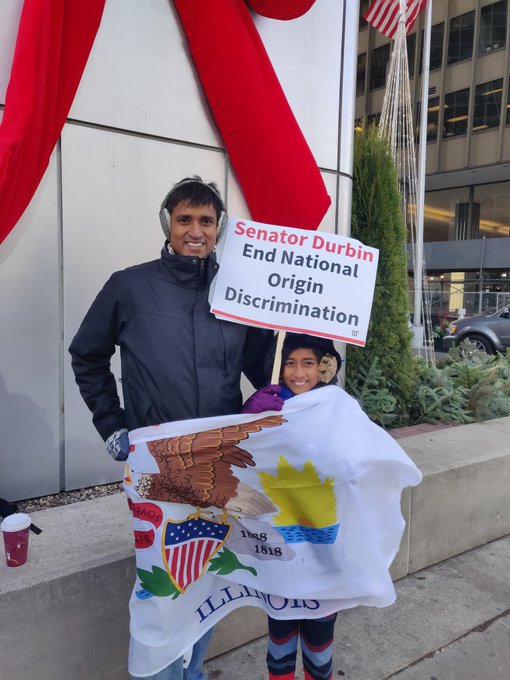









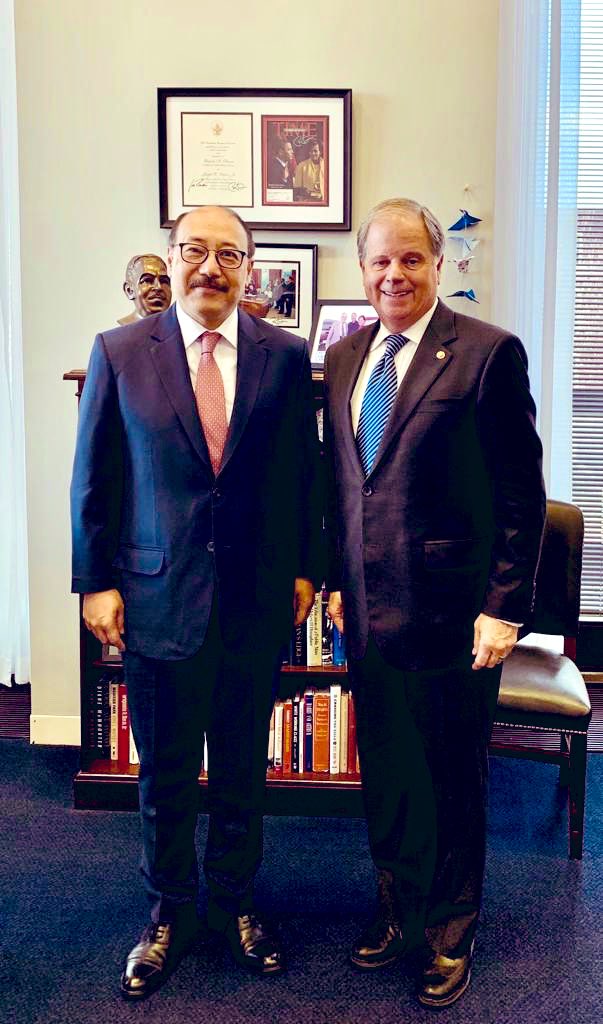



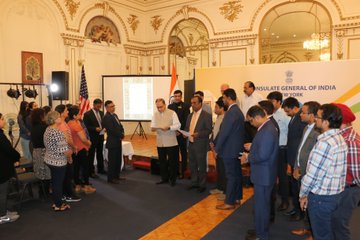
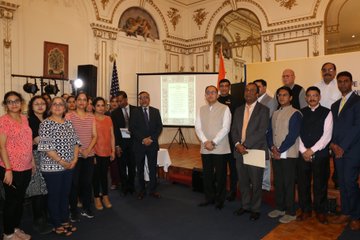







No comments:
Post a Comment